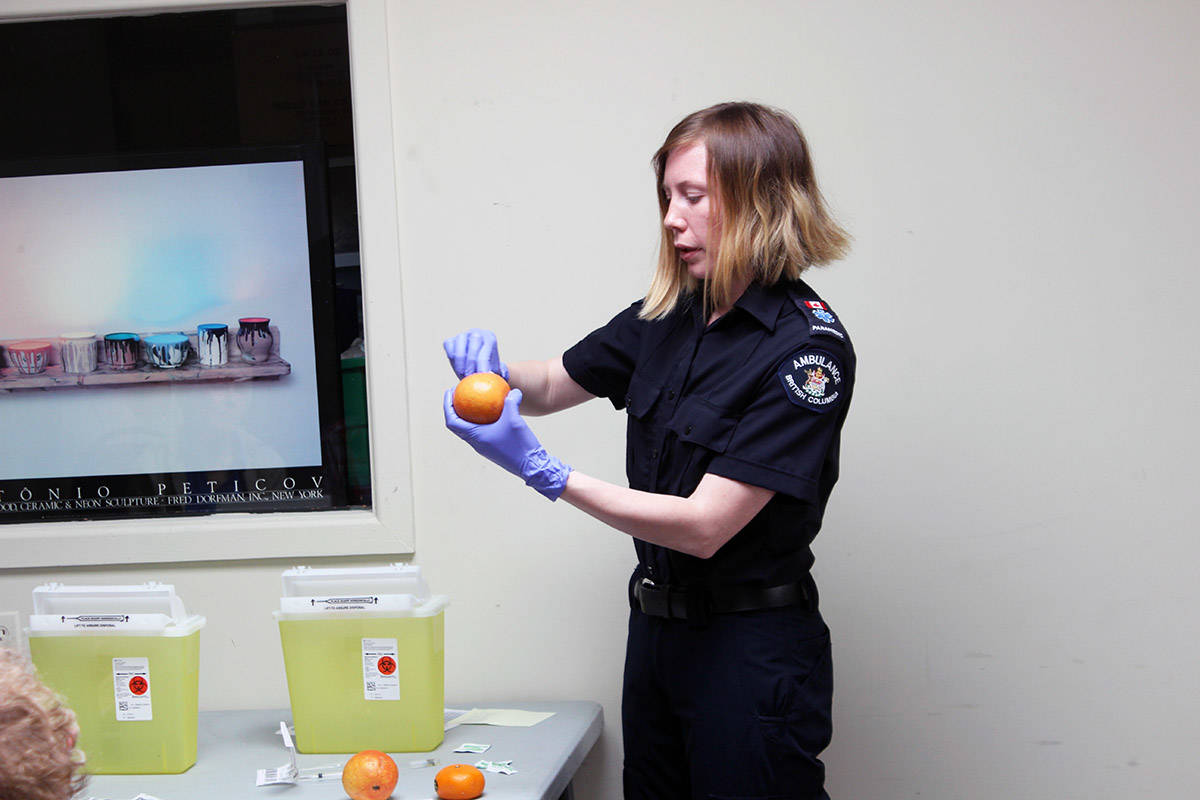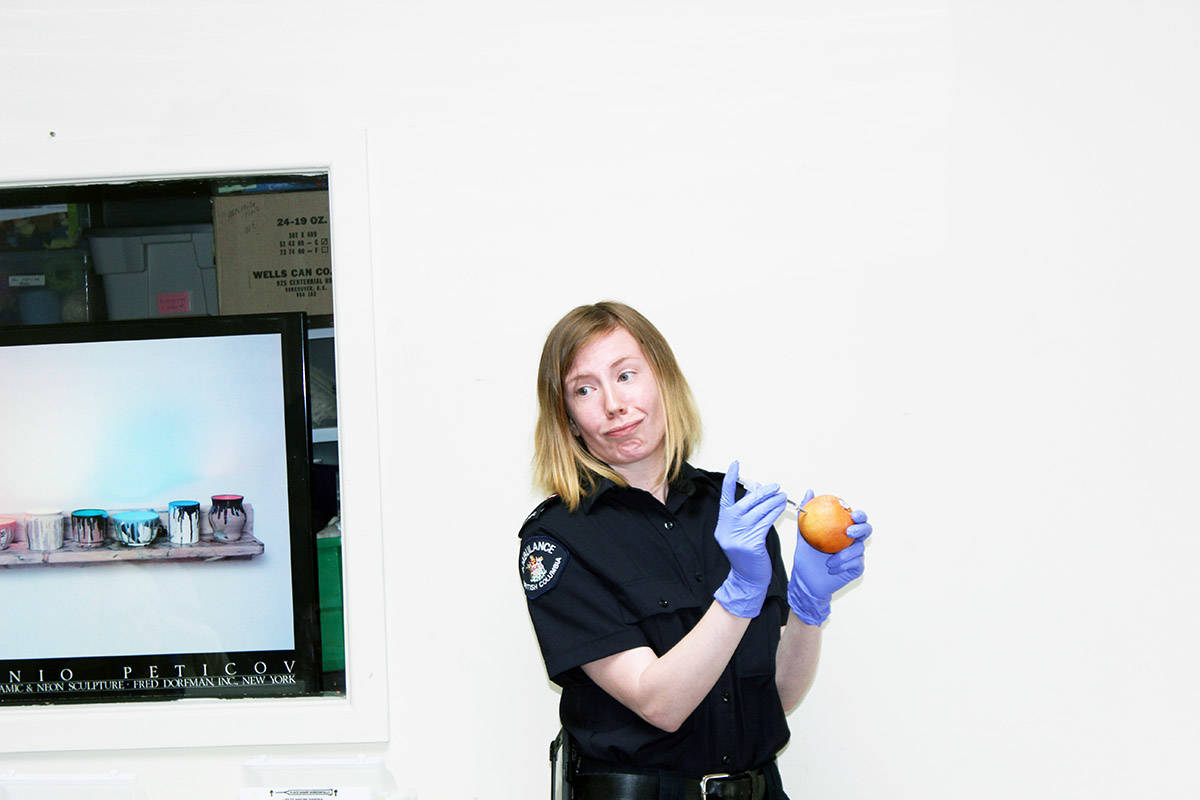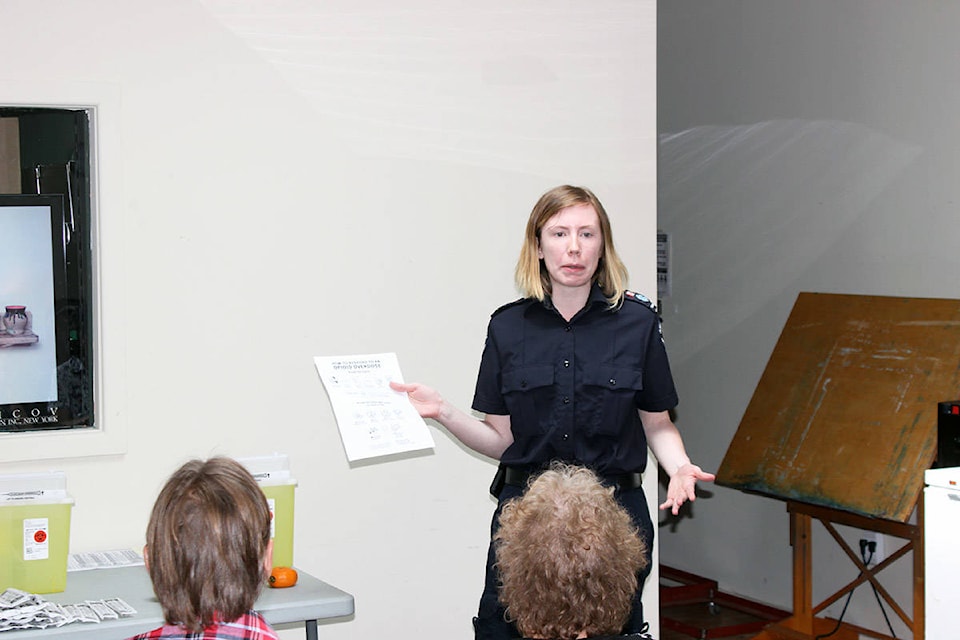Not that long ago, many people had never heard of Naloxone.
Since the opioid crisis has reached epidemic proportions, it’s become a household name in the treatment of overdoses.
Cowichan Neighbourhood House in Chemainus recently held a workshop on how to potentially save the life of someone who has overdosed on opioids through the use of Naloxone kits.
Naloxone is a medication used to block the effects of opioids in overdose situations.
Fifteen people attended the workshop to learn how to administer Naloxone from community paramedic Georgia Nelson.
“For me, this is so good for as many people to know what they’re doing for a healthier community,” said Neighbourhood House’s Arlene Robinson, who organized the session.
BC Emergency Health Services tracks all calls for potential overdoses through its 9-1-1 dispatch centres. However, it may not capture all opioid overdoses, i.e. those that are not called in to 9-1-1, and also includes alcohol intoxication and poisoning ingestions.
Chemainus had 14 overdose calls in 2015, 20 in 2016, nine in 2017 and five in the first seven months of 2018, according to Shannon Miller, the communications officer for BC Emergency Health Services.
By comparison, Duncan had 97 overdose calls in 2015 and the number skyrocketed to 162 in 2016 and 184 in 2017. The total for 2018 to date wasn’t available.
“I can say if BCEHS paramedics are contacted early in the overdose process, it’s generally a 99 per cent saved rate,” noted Miller. “On our high provincial overdose day in July when B.C. recorded 130 overdoses, none of the patients died.”
Nelson handed out material at the workshop that covers the steps for responding to an opioid overdose.
Knowing the signs is a first indicator: not moving and can’t be wakened; slow breathing or no breathing at all; blue lips and nails; choking, gurgling sounds or snoring; cold or clammy skin and tiny pupils.
Once any or all of those symptoms are identified, it’s imperative to call 911 and stay to help.
“There’s a fairly decent response time in Chemainus,” Nelson noted.
The steps to saving a life, utilizing the acronym SAVE ME, are: Stimulate (unresponsive? call 911); Airway (check and open); Ventilate (breath every five seconds); Evaluate (breathing?), Medication (one millilitre of Naloxone); and Evaluate and support (another dose?).
Nelson went through the content of the Naloxone kits during the workshop and explained how to inject the drug. There’s enough Naloxone in the kits for three doses.
“Naloxone is a harmless drug,” she explained. “If I just give Naloxone to any of you, it won’t have any pharmacological effects.”
It generally takes eight to 10 hours, in the case of fentanyl, to clear a person’s system.
Some of the people at the clinic already had some experience through nursing or other medical careers or situations. The others learned some valuable information in the event they encounter a person who has overdosed.
The Community Paramedicine Program is relatively new and many people don’t know the role paramedics are now playing within rural communities, according to Miller, especially in terms of education and broadening the focus of paramedics to include prevention, health promotion and basic health-care services.
B.C. is the first province in Canada to implement a province-wide community paramedicine program and there are currently more than 100 community paramedics working in rural communities.


